Looking for the best hunting waders for big guys that won’t pinch, squeeze or fall short? Big guys need gear tailored to their unique size and comfort requirements without sacrificing durability or functionality. This guide dives straight into the top hunting waders on the market, designed with ample space and robust features for superior outdoor performance. Find the fit, resilience, and versatility you need, so you can focus on the hunt, not your outfit.
Top Picks for Spacious and Durable Hunting Waders

Embarking on a hunting or fishing trip requires the right gear, and waders are no exception. For big and tall folks, the challenge lies in finding waders that offer extra roominess without compromising on durability and performance. Here are our top picks that offer the perfect balance of comfort and functionality:
Whether you are looking for a high-performance all-rounder or a budget-friendly option, our list has something for every big man and big tall outdoor enthusiast.
1- Best for All-Around Performance: Hodgman Caster Neoprene Cleat Bootfoot Wader
Pros
- Robust construction for enhanced durability
- Versatile performance across different hunting environments
Cons
- Heavier than some alternatives, affecting mobility during long walks
The Hodgman Caster Neoprene Cleat Bootfoot Wader stands out for its robust construction, offering excellent insulation and overall durability. Built from 3.5mm neoprene, these waders offer a reliable all-around performance regardless of your hunting environment. Whether you’re trudging through muddy swamps or navigating rocky riverbeds, the Hodgman Caster is up to the task.
Despite being on the heavier side, which may affect mobility during long walks to your hunting or fishing spot, these big and tall waders offer great value for money. The sturdy construction ensures longevity, while the versatile performance makes it a solid choice for hunters operating in diverse environments, especially when wearing tall waders.
Rating:
- Durability: 4.5/5
- Comfort: 4/5
- Versatility: 4/5
- Value for Money: 4/5
Specifications:
- Material: 3.5mm neoprene
- Boot Type: Cleat Bootfoot
2- Best for Slippery Terrain: Hodgman Caster Neoprene Felt Bootfoot Wader

Pros
- Soft neoprene material for comfort and injury prevention
- Superior traction for stability on slippery terrain
Cons
- May not provide sufficient warmth in cold conditions
The Hodgman Caster Neoprene Felt Bootfoot Wader is a great pick for those navigating slippery terrain. Here are some key features of these waders:
- Constructed from 3mm neoprene
- Balance of stability and comfort
- Soft neoprene material enhances comfort and reduces the chance of sustaining bruises and injuries from falls.
The textured sole of the boot provides superior traction, offering stability on slippery terrain. This makes the Hodgman Caster Neoprene Felt Bootfoot Wader a practical choice for hunting in challenging environments. However, they may not provide sufficient warmth in colder conditions, so additional layering might be necessary for winter hunts.
Rating:
- Durability: 4/5
- Comfort: 4.5/5
- Stability: 5/5
- Value for Money: 4/5
Specifications:
- Material: 3mm neoprene
- Boot Type: Felt Bootfoot
3- Best Camouflage Design: Hodgman Brighton Neoprene Cleated Wader-Max5

Pros
- Effective camouflage design for stealth in various hunting environments
- Thick synthetic rubber material offers warmth
Cons
- Less breathability compared to other materials
The Hodgman Brighton Neoprene Cleated Wader-Max5 is a top choice for hunters who value stealth. Featuring an effective camo pattern, these waders can keep you concealed in various hunting environments. Made from thick synthetic rubber, the neoprene material offers warmth, making these waders suitable for hunts in colder weather.
While neoprene provides excellent warmth, it may offer less breathability compared to other materials. Despite this, many hunters have expressed satisfaction with the Hodgman Brighton’s camouflage effectiveness during hunts. The waders offer a great blend of performance and design that is sure to enhance your hunting experience.
Rating:
- Durability: 4/5
- Comfort: 4/5
- Stealth: 5/5
- Value for Money: 4/5
Specifications:
- Material: Synthetic rubber (neoprene)
- Design: Camo patterned
- Boot Type: Cleated
4- Best Hip Boot Option: Frogg Toggs Classic II Cleated Hip Boot
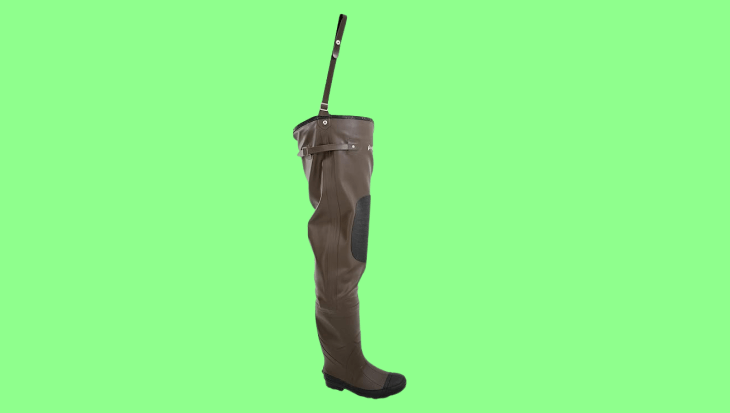
Pros
- Waterproof construction ensures wearer stays dry The adjustable side strap allows for a customized fit, ensuring maximum comfort and support.
- Provides reliable traction on muddy conditions
Cons
- May not provide adequate protection in deeper waters
The Frogg Toggs Classic II Cleated Hip Boot is a great option for those in need of a solid hip boot for hunting. Constructed with waterproof vulcanized rubber, these boots ensure the wearer stays dry in various terrains like shallow water and mud. The adjustable side strap allows for a customized fit, enhancing comfort and ease of movement.
The cleated rubber outsole provides reliable traction, making these boots a practical choice for navigating muddy conditions and uneven terrain. Despite their toughness, they may not provide adequate protection in deeper waters. Nonetheless, for everyday use, these boots offer continued dryness for the feet, even on rainy days, making them a reliable companion for your hunting trips.
Rating:
- Durability: 4.5/5
- Comfort: 4/5
- Traction: 5/5
- Value for Money: 4.5/5
Specifications:
- Material: Waterproof vulcanized rubber
- Boot Type: Cleated
5- Most Budget-Friendly Hip Wader: Hodgman Mackenzie Cleated Bootfoot Hip Wader
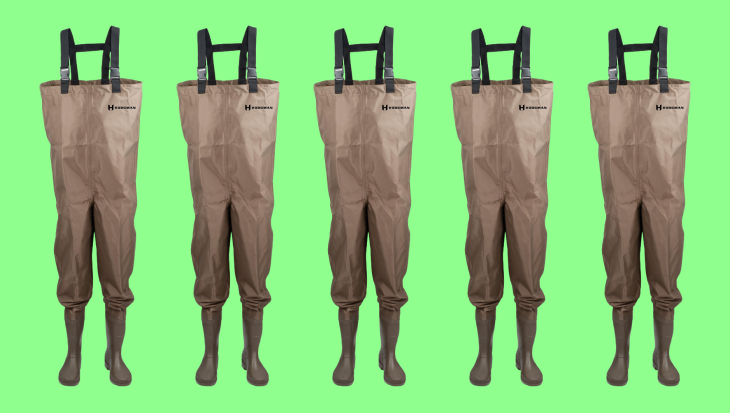
Pros
- Affordable option with good performance
- Notably easy to put on and remove
- No leakage reported by users
Cons
- Fit may vary, with some users reporting sizes running too large or just right
Hodgman Mackenzie Cleated Bootfoot Hip Wader is an affordable option that doesn’t compromise on performance. With a price range of $90 to $110, these waders offer good performance and are notably easy to put on and remove. Users reported no leakage, which is an impressive feature for a budget-friendly wader.
While the waders score high on affordability and ease of use, the fit may be a challenge for some users. Some users reported that the waders ran too large or just right. However, with a bit of research and careful selection, these waders can offer excellent value for money, making them a sound choice for budget-conscious hunters.
Rating:
- Durability: 4/5
- Comfort: 3.5/5
- Affordability: 5/5
- Value for Money: 4.5/5
Specifications:
- Material: Not specified
- Boot Type: Cleated Bootfoot
6- Best Knee Protection: Caddis Rubber Hip Boot with Knee Harness
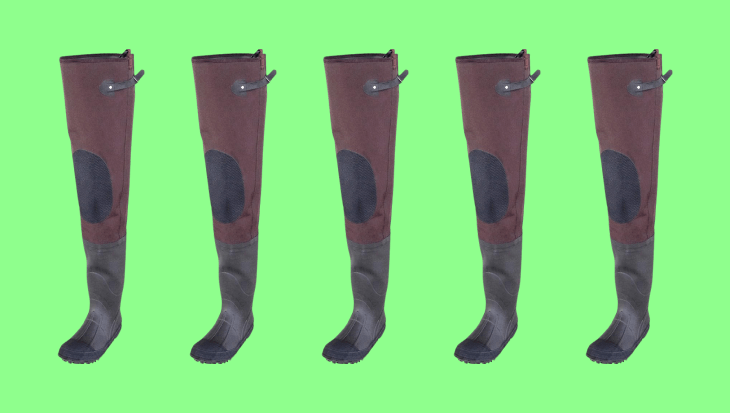
Pros
- Provides added knee support
- Designed for rough terrains
- Two side loops with snaps for additional support
Cons
- May not provide adequate protection in deeper waters
The Caddis Rubber Hip Boot with Knee Harness features:
- Reinforced and padded knees for added knee support
- 2-ply rubber uppers designed for rough terrains
- Adjustable wading belt with a locking buckle
- Adjustable X-back suspenders with low-profile buckles
These boots are designed with the needs of active hunters in mind, providing comfort and mobility.
While these boots offer excellent knee protection and support, they may not provide adequate protection in deeper waters. Nonetheless, for hunting in rough terrains and shallow waters, these boots offer excellent durability and a fit that accommodates the needs of big guys.
Rating:
- Durability: 4/5
- Comfort: 4.5/5
- Knee Support: 5/5
- Value for Money: 4.5/5
Specifications:
- The material used for the uppers is 2-ply rubber which provides durability and flexibility. This makes the shoes suitable for various outdoor activities.
- Design: Reinforced and padded knees
7- Best Stockingfoot Wader for Layering: Hodgman Caster Neoprene Stockingfoot Wader
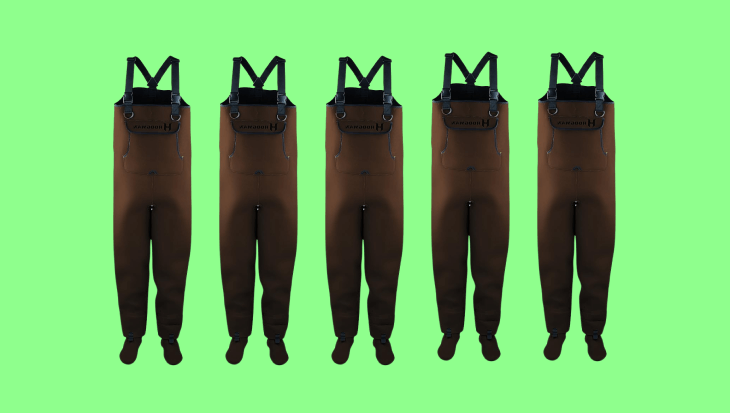
Pros
- Allows for easy layering under varying weather conditions
- Flexibility in choosing separate wading boots to suit different hunting environments
Cons
- May not provide sufficient warmth when worn over shorts
The Hodgman Caster Neoprene Stockingfoot Wader offers:
- Flexibility of choosing separate wading boots to suit different hunting environments and personal preferences
- Easy layering under varying weather conditions
- Versatility as a part of a hunter’s gear
Constructed from neoprene up to the waist for warmth, combined with a breathable upper part for improved ventilation, this wader is ideal for those who like to layer. However, they may not provide sufficient warmth when worn over shorts. Thus, additional layers may be needed for colder conditions. Nonetheless, for its versatility and ease of layering, the Hodgman Caster Neoprene Stockingfoot Wader is a sound choice.
Rating:
- Durability: 4/5
- Comfort: 4/5
- Versatility: 5/5
- Value for Money: 4/5
Specifications:
- Material: Neoprene up to the waist with a breathable upper part
- Boot Type: Stockingfoot
8- Best for Deep Water Expeditions: Hodgman Mackenzie Cleat Chest Bootfoot Wader

Pros
- Provides considerable coverage for deep water expeditions
- Ensures waterproof protection and durability
Cons
- Fit may vary, with some users reporting sizes running too large or just right
The Hodgman Mackenzie Cleat Chest Bootfoot Wader provides considerable coverage ideal for deep water expeditions. These waders allow users to wade in water up to their high chest without leaks, ensuring all-day comfort and protection.
While providing excellent waterproof qualities, some users report challenges with the fit of the waders, with various experiences regarding size accuracy and comfort. However, with careful selection and adjustment, these waders can be an excellent choice for those venturing into deep waters.
Rating:
- Durability: 4/5
- Comfort: 3.5/5
- Coverage: 5/5
- Value for Money: 4/5
Specifications:
- Material: Not specified
- Boot Type: Cleat Chest Bootfoot
9- Best Lightweight Option for Quick Trips: GameWade chest wader
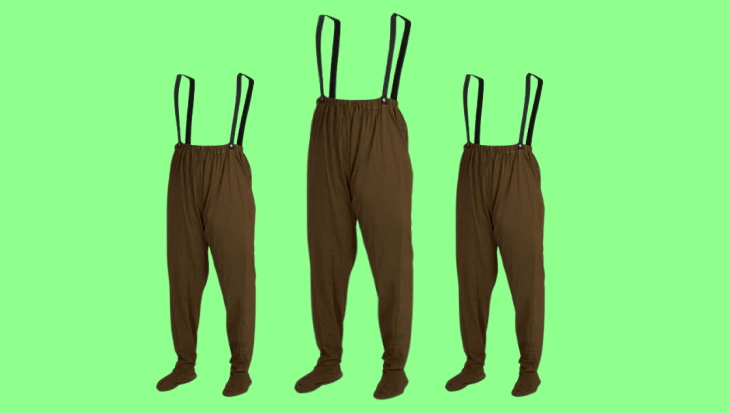
Pros
- Lightweight construction for portability
- Adjustable wading belt with a locking buckle for a secure and comfortable fit
Cons
- May not provide sufficient warmth in cold conditions
The GameWade chest wader is an excellent choice for those needing a lightweight option for quick trips. Made from lightweight nylon, these waders enhance portability and make for compact storage. An adjustable wading belt with a locking buckle ensures a snug fit, enhancing comfort and ease of movement. Additionally, a convenient pocket allows for easy access to essential items.
While perfect for quick trips and summer hunts, these waders may not provide adequate insulation in extremely cold conditions and have less resistance to punctures compared to neoprene waders. Nevertheless, for its portability and ease of use, the GameWade chest wader is an excellent value-for-money option for quick hunting or fishing trips.
Rating:
- Durability: 3.5/5
- Comfort: 4/5
- Portability: 5/5
- Value for Money: 4.5/5
Specifications:
- Material: Lightweight nylon
- Boot Type: Not specified
10- Best Breathability for Warm Climates: Caddis Breathable Stockingfoot Wader

Pros
- Superior comfort due to excellent air circulation
- Reduces sweating during long hunts in warm conditions
Cons
- May not provide adequate insulation in extremely cold conditions
- Less resistance to punctures compared to neoprene waders
The Caddis Breathable Stockingfoot Chest Waders are engineered to offer superior comfort due to their excellent air circulation that reduces sweating during long hunts in warm conditions. These waders are designed for breathability, allowing for a comfortable hunting experience even in hotter climates.
While perfect for milder climates, breathable waders may not provide adequate insulation in extremely cold conditions and have less resistance to punctures compared to neoprene waders. Despite these potential drawbacks, the superior comfort offered by these waders in warm conditions makes them a worthy addition to your hunting gear.
Rating:
- Durability: 3.5/5
- Comfort: 4.5/5
- Breathability: 5/5
- Value for Money: 4/5
Specifications:
- Material: Breathable
- Boot Type: Stockingfoot
Choosing Your Ideal Hunting Waders
Choosing the right waders can make a significant difference to your hunting or fishing experience. For big guys, it’s crucial to look for waders that offer ample room in the belly and thigh regions to accommodate larger body sizes. A poor fit can lead to discomfort and even restrict movement, so it’s worth spending the time to find a pair that fits well.
Material durability and the insulation properties of waders are also important factors to consider. While cheaper waders may seem like a good deal initially, they may not offer the same level of comfort or last as long as more expensive options.
Ultimately, the “ideal” waders will depend on your specific needs and preferences, as well as the specific conditions in which you’ll be hunting or fishing.
Understanding Wader Materials and Construction
Understanding the materials and construction of waders can help you make a more informed choice. Neoprene, for example, is robust and designed for durability. It is often used in hunting waders due to its insulation properties. However, neoprene waders can create discomfort if they fit too tightly or do not handle folding well, which may occur during wear.
Cheaper neoprene waders often have poorly joined seams, making them susceptible to leaks and reducing their longevity. Therefore, it’s worth considering investing in a higher-quality pair of waders that will not only last longer but also provide a more comfortable and enjoyable hunting experience.
Practical Tips for Wader Maintenance and Care
Taking care of your waders can significantly extend their lifespan and ensure optimal performance. It’s essential to rinse your waders with fresh water after each use to remove harmful substances. Periodic washing with a light detergent every 15-20 days of use can also help preserve the breathability and performance of your waders.
Ensure your waders are completely dry before storage to prevent mildew or mold growth. Hanging your waders to air dry is recommended, as machine drying can damage the seams. For small punctures or tears, a repair kit with patches and waterproof glue can be a handy addition to your hunting gear.
Summary
In conclusion, finding the right pair of hunting waders for big guys involves considering several factors, including fit, material durability, insulation, and the specific conditions in which you’ll be using them. Whether you prefer the all-around performance of the Hodgman Caster Neoprene Cleat Bootfoot Wader or the breathability of the Caddis Breathable Stockingfoot Wader, the right pair of waders can enhance your hunting or fishing experience.
Remember, the “best” waders for you will depend on your specific needs and preferences. So, take your time, do your research, and don’t hesitate to try a few different options before making your final decision. Happy hunting!
Frequently Asked Questions
What type of waders are best for big guys?
For big guys, waders with extra room in the belly and thigh areas, such as the Hodgman Caster Neoprene Cleat Bootfoot Wader and the Caddis Northern Flight Guide waders, are the best choices. These options provide the necessary space and comfort for a better fit and an enjoyable outdoor experience.
Are neoprene waders suitable for all weather conditions?
Neoprene waders are suitable for cold weather conditions due to their excellent insulation, but they may not be as comfortable in hot weather due to reduced breathability. Therefore, they are not suitable for all weather conditions.
How should I clean and store my waders after use?
After each use, rinse your waders with fresh water and wash them with a light detergent every 15-20 days of use. Make sure they are completely dry before storing to prevent mildew or mold growth.
Should I buy waders with boots attached or separate?
It depends on your personal preference. Waders with boots attached offer convenience and ensure a good fit, while separate boots offer more flexibility and can be replaced independently.
What should I do if my waders get punctured or torn while hunting?
If your waders get punctured or torn while hunting, you can fix small damages with a repair kit, but for larger ones, it’s best to seek professional repair or consider replacing them.